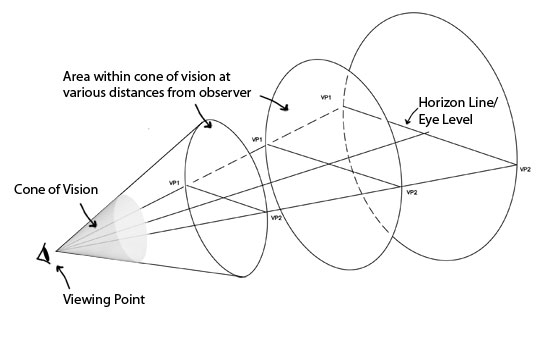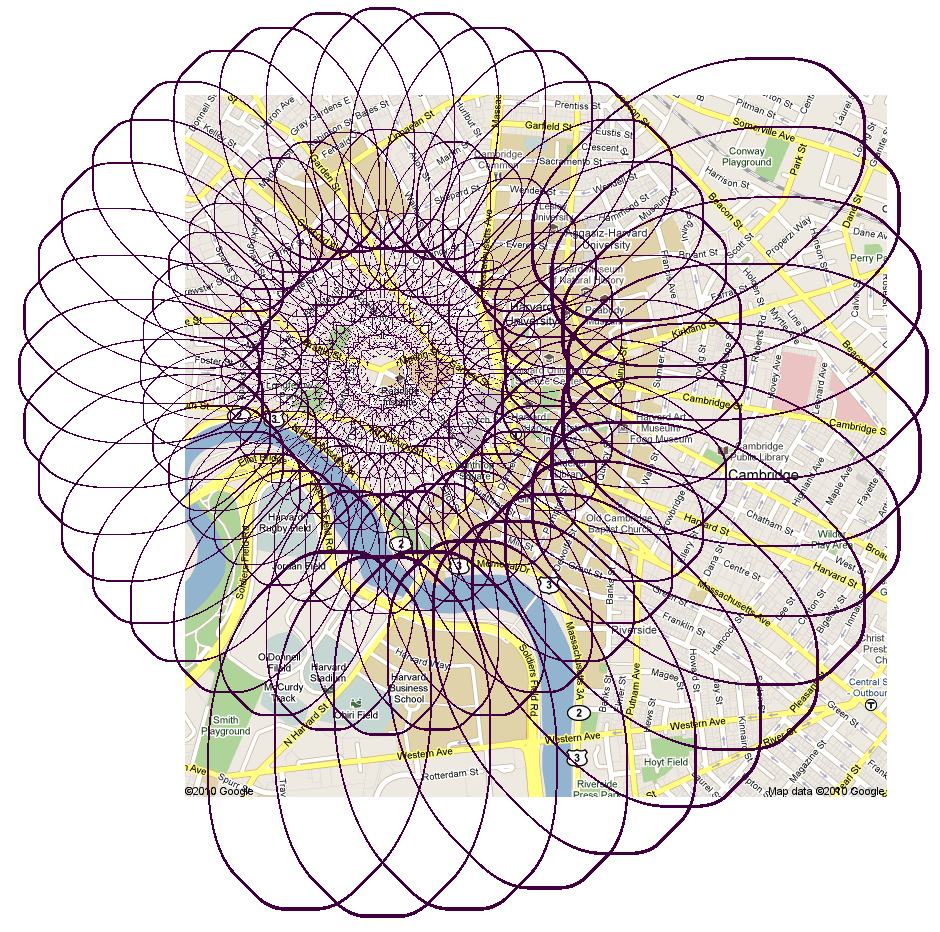I'm glad you noticed that, saved me a bunch of typing

I will note that I think actively observed peripheral vision is *still present* in option 2 - in the form of line
seeking-
unless someone has absolutely painted a blue line for you to follow.
In other words,
painting such a blue line would mean a heapload less work for your short term memory as it maps focus zones.
We can structure experiments with eyeglasses and masking tape if you like.
Funny. My rock-running visualization is the following. I use it every day when I run the trails. You've nailed it.
I imagine I am holding a long rod, and on the end of that rod is a paint roller. The roller has a limitless supply of white paint. I roll that roller out in front of me as I run on the trail. Then my copilot puts my feet on that line as I pass over it.
---At first I had to train myself to make a decisive line choice. I'd second guess all the time, re-choose the line, my feet would catch up to my paint roller, then I'd stumble. I don't do that any more. I make a decisive line choice and deal with it.
---Early in this process I also had to work hard not to look down to make sure my feet landed on the line. I don't do that any more. Not looking is prompted by my mantra "Get greedy!" Greedy for the extra time that I sense when I am looking ahead and trusting the copilot.
---For a long time as I rolled that paint along the trail, I'd choose very specifically where the line went. I'd wiggle the roller to the left of that rock, right around that one, over the top of the flat one next, then right around the big one. Magically my feet would obediently land in those spots (somehow... thus the imagined copilot placing the feet).
---Now I'm working on using a wider paint roller, not wiggling it left-righ between the rocks but painting broadly down a wider swath of trail. My vision takes in a wider area up ahead, without choosing specifically where to put my left foot and my right foot. I trust (or am working on trusting) my copilot to place the feet in the best place. So far it's been working. I haven't hit the granite yet on those downhills. Peripheral
choosing -- does that process exist?
Leaves and running water have now put an end to my running probably for the season. The mountains are blowing snow as I type. My last run was wet, slippery, and unpleasant. I do not like having to be that cautious.
Just to be clear, in case anyone reading here thinks I'm a bad-ass rock runner, I am painfully slow. I am careful to pick my way down when the leaves are sliding over one another, destroying any grip I might find. I can't do better than next-to-last, or last, in a timed trail run. I'm training for bumps, actually, and discovering how much fun the trail is on its own merits. AND how much fun it is to figure this stuff out. I suspect young brave strong runners don't have to go through this type of mental training that I'm going through. I envy people who just "know" this stuff intuitively. That's not me.
So, tuna, does this align with stuff you are talking about?


